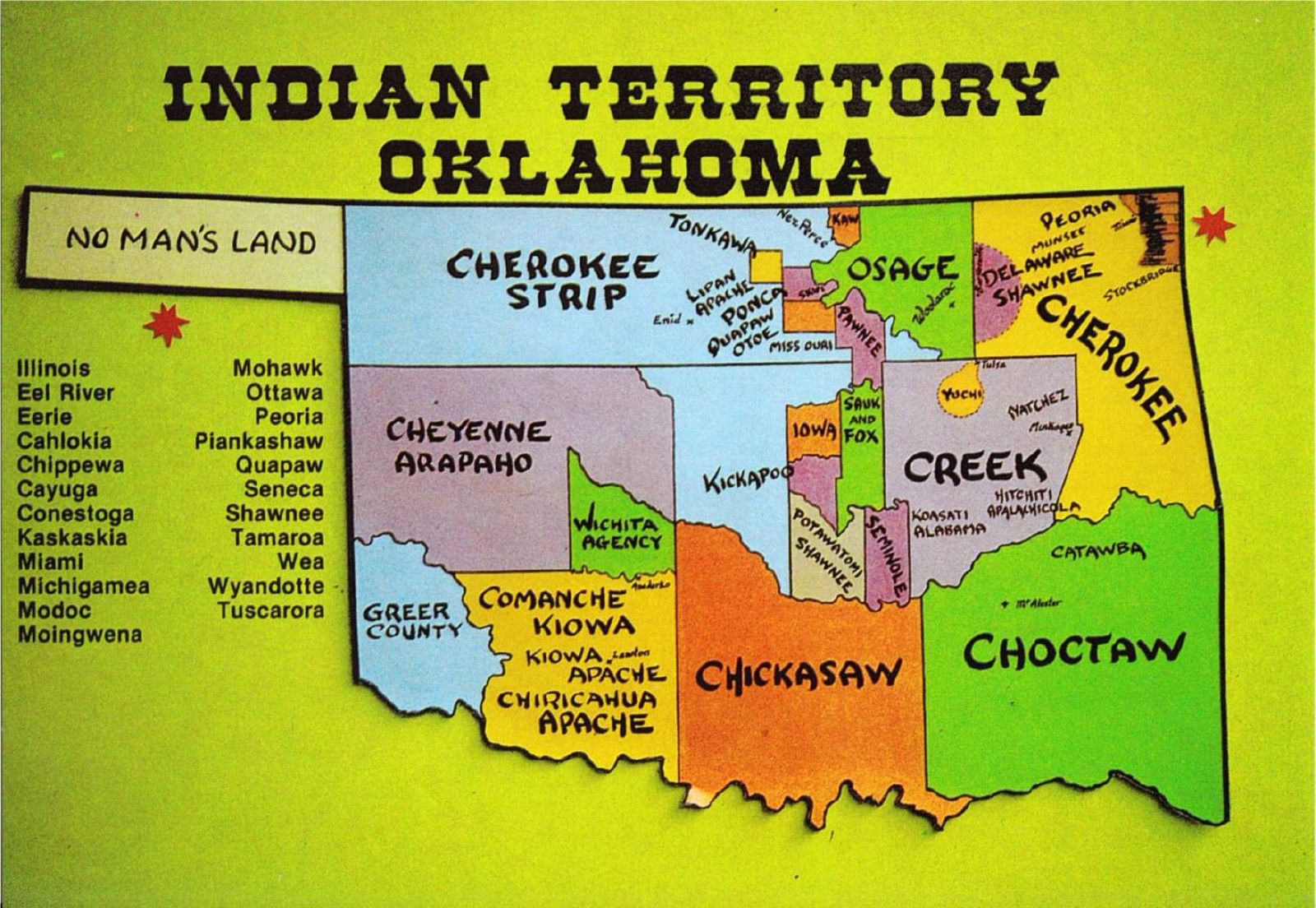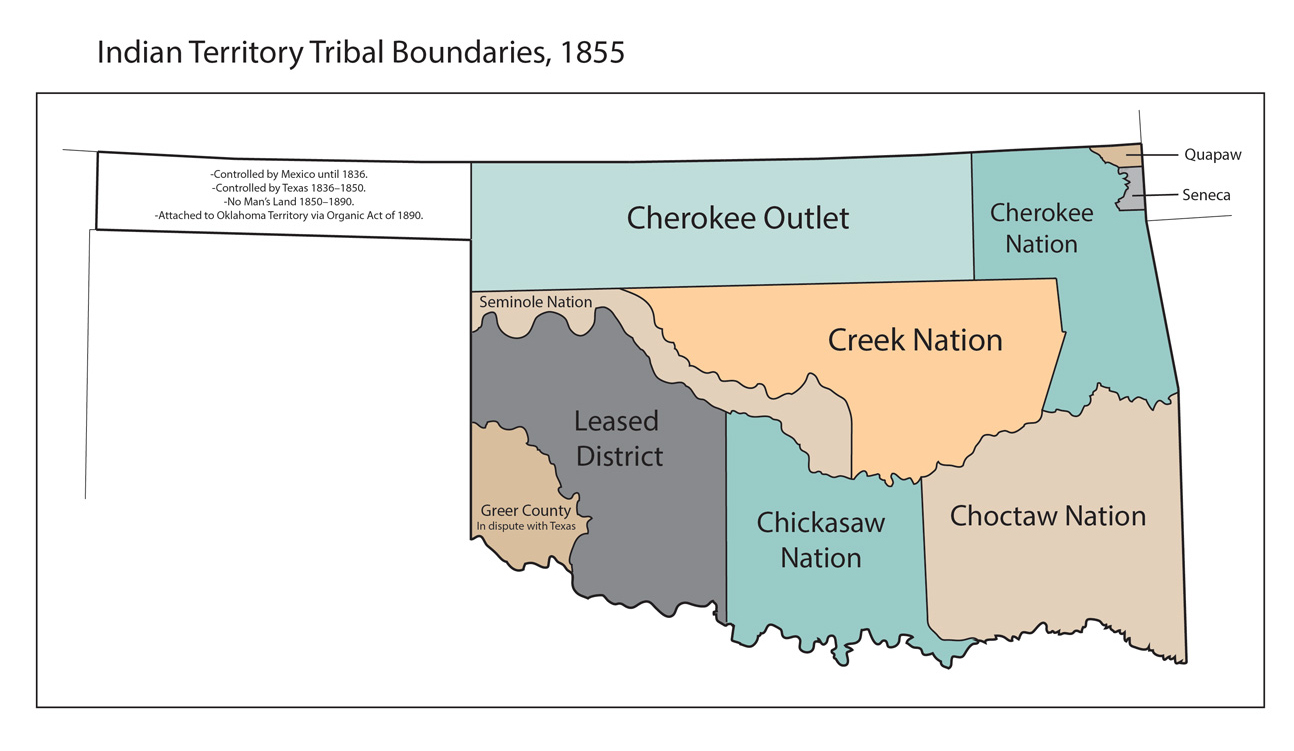Oklahoma’s Tribal Tapestry: A Journey Through Reservations and History
Oklahoma’s Tribal Tapestry: A Journey Through Reservations and History

Oklahoma, the "Sooner State," holds a rich and complex history woven with the stories of its Native American tribes. From the sprawling plains to the rolling hills, Oklahoma is home to 39 federally recognized tribes, each with its own unique culture, traditions, and stories. Understanding this tapestry of tribal lands and their history is crucial to appreciating Oklahoma’s unique identity.
A Land of Many Nations:
Related Articles: Oklahoma’s Tribal Tapestry: A Journey Through Reservations and History
- Unveiling Truths: The Grand Canyon's Surprising Connection to Indian Reservations
- Discover Oklahoma Indian Reservations: A Journey of Cultural Exploration
- Unveiling the Vast Landscapes: Discover the Largest Native American Reservations in the US
- Unveiling the Enriching Tapestry of Indian Reservations in Colorado Springs
- Discover the Linguistic Tapestry of Virginia's Native American Communities
Oklahoma is often referred to as "Indian Territory" for a reason. Before statehood in 1907, the area was designated as a place for Native American tribes to be relocated, often forcibly, from their ancestral lands. This relocation, known as the "Trail of Tears," resulted in the forced displacement of thousands of Cherokee, Choctaw, Chickasaw, Creek, and Seminole people.
Navigating the Map:
The map of Oklahoma’s reservations is a patchwork of distinct tribal territories, each with its own history and governance. These reservations are not just geographical areas; they represent a unique blend of cultural heritage and self-determination.
The Five Civilized Tribes:
The "Five Civilized Tribes" – Cherokee, Choctaw, Chickasaw, Creek, and Seminole – are particularly prominent in Oklahoma’s history. These tribes, known for their assimilation into European culture, were forced to relocate to Indian Territory in the 19th century. They established their own governments, schools, and legal systems, creating a unique blend of Native American and European traditions.
Beyond the Five Tribes:
While the Five Civilized Tribes are well-known, Oklahoma’s tribal landscape is much more diverse. From the Osage Nation with its rich oil and mineral resources to the Comanche Nation with its strong warrior heritage, each tribe has its own story to tell. The Kiowa, Apache, Caddo, and many others also call Oklahoma home, each contributing to the state’s cultural richness.
The Impact of Reservations:

Oklahoma’s reservations are not just historical relics; they are vibrant communities with a significant impact on the state’s economy, culture, and politics. Tribal governments play a vital role in providing essential services like healthcare, education, and economic development for their citizens. They also contribute to the state’s economy through gaming, tourism, and other businesses.
Oconto County Plat Map: A Deeper Look:
While we can’t delve into the specifics of Oconto County’s plat map without knowing the context, it’s important to understand that plat maps provide detailed information about land ownership and boundaries. In the case of Oklahoma’s reservations, these maps are crucial for understanding the legal and historical context of tribal lands. They can reveal the history of land allocation, treaty agreements, and the ongoing struggle for tribal self-determination.
Navigating the Digital Age:
With the rise of the internet, finding information about Oklahoma’s reservations has become easier than ever. Websites like the Oklahoma Indian Affairs Commission and the websites of individual tribes provide valuable resources, including maps, history, and contact information. These online resources offer a glimpse into the vibrant cultures and traditions of Oklahoma’s Native American communities.

Respect and Understanding:
When exploring Oklahoma’s reservations, it’s essential to approach the subject with respect and understanding. These lands are not just geographical areas; they are sacred spaces with deep cultural and historical significance. It’s crucial to avoid making generalizations or perpetuating stereotypes about Native American cultures. Instead, embrace the opportunity to learn about the unique stories and perspectives of each tribe.
Beyond the Map:
The map of Oklahoma’s reservations is just a starting point. To truly understand the tapestry of tribal life in Oklahoma, you need to go beyond the lines on the map and engage with the people, their stories, and their traditions. Visit tribal museums, attend powwows, and engage in conversations with tribal members to gain a deeper appreciation for their rich heritage.
FAQ About Indian Reservations in Oklahoma Map Oconto County Plat Map

1. What is the purpose of an Oconto County Plat Map?
An Oconto County Plat Map, or any plat map for that matter, is a detailed map that shows the boundaries of individual parcels of land within a specific area. It’s used for various purposes, including:
- Land Ownership: Identifying the owners of specific properties.
- Property Boundaries: Showing the exact location of property lines.
- Land Development: Planning for new development projects.
- Legal and Historical Research: Understanding the history of land ownership and usage.
2. How can I find an Oconto County Plat Map?
You can typically find plat maps at the following locations:
- Oconto County Assessor’s Office: This office is responsible for maintaining property records and plat maps.
- Oconto County Clerk’s Office: This office may also have copies of plat maps.
- Online Resources: Some counties make their plat maps available online. You can search for "Oconto County plat map" on the internet to see if any online resources are available.
3. What is the difference between an Indian Reservation and a County?
Indian reservations are areas of land set aside by the federal government for the use of specific Native American tribes. They have their own unique governments, laws, and cultural traditions. Counties, on the other hand, are administrative divisions of a state. They are governed by elected officials and are responsible for providing local services like law enforcement, roads, and public health.
4. What are the benefits of living on an Indian Reservation?
Living on an Indian reservation can offer a number of benefits, including:
- Cultural Preservation: Reservations provide a safe space for tribes to maintain their cultural traditions and languages.
- Self-Governance: Tribal governments have a degree of autonomy, allowing them to make decisions about their own affairs.
- Economic Opportunities: Some reservations offer economic opportunities through gaming, tourism, and other businesses.
- Access to Services: Tribal governments often provide essential services like healthcare, education, and social services to their citizens.
5. What are the challenges of living on an Indian Reservation?
Living on an Indian reservation can also present some challenges, including:
- Poverty: Many reservations have high rates of poverty, unemployment, and limited access to resources.
- Lack of Infrastructure: Some reservations have limited infrastructure, such as roads, water, and electricity.
- Health Disparities: Native Americans often face health disparities compared to the general population.
- Historical Trauma: The history of colonization and forced relocation has had a lasting impact on Native American communities.
6. How can I learn more about the history and culture of Oklahoma’s Native American tribes?
There are many ways to learn more about the history and culture of Oklahoma’s Native American tribes:
- Visit Tribal Museums: Oklahoma has several tribal museums that offer exhibits and artifacts showcasing the history and culture of different tribes.
- Attend Powwows: Powwows are traditional Native American gatherings that feature dancing, drumming, and storytelling.
- Read Books and Articles: There are many books and articles written about the history and culture of Oklahoma’s Native American tribes.
- Connect with Tribal Members: Reach out to tribal members and ask them to share their stories and perspectives.
7. How can I support Oklahoma’s Native American tribes?
You can support Oklahoma’s Native American tribes in a number of ways:
- Patronize Tribal Businesses: Support businesses owned and operated by tribal members.
- Donate to Tribal Organizations: Donate to organizations that support the education, healthcare, and economic development of Native American communities.
- Advocate for Tribal Rights: Speak out against policies that harm Native American tribes.
- Educate Yourself and Others: Learn about the history and culture of Native American tribes and share your knowledge with others.
Conclusion:
Oklahoma’s reservations are more than just geographical areas; they are living testaments to the resilience, culture, and history of Native American tribes. Exploring the map of Oklahoma’s reservations is a journey through time, a journey that reveals the struggles, triumphs, and enduring spirit of these communities. By understanding the history and significance of these lands, we can appreciate the unique tapestry of Oklahoma’s cultural heritage and support the ongoing efforts of Native American tribes to preserve their traditions and build a brighter future.

Closure
Thus, we hope this article has provided valuable insights into Oklahoma’s Tribal Tapestry: A Journey Through Reservations and History. We thank you for taking the time to read this article. See you in our next article!


